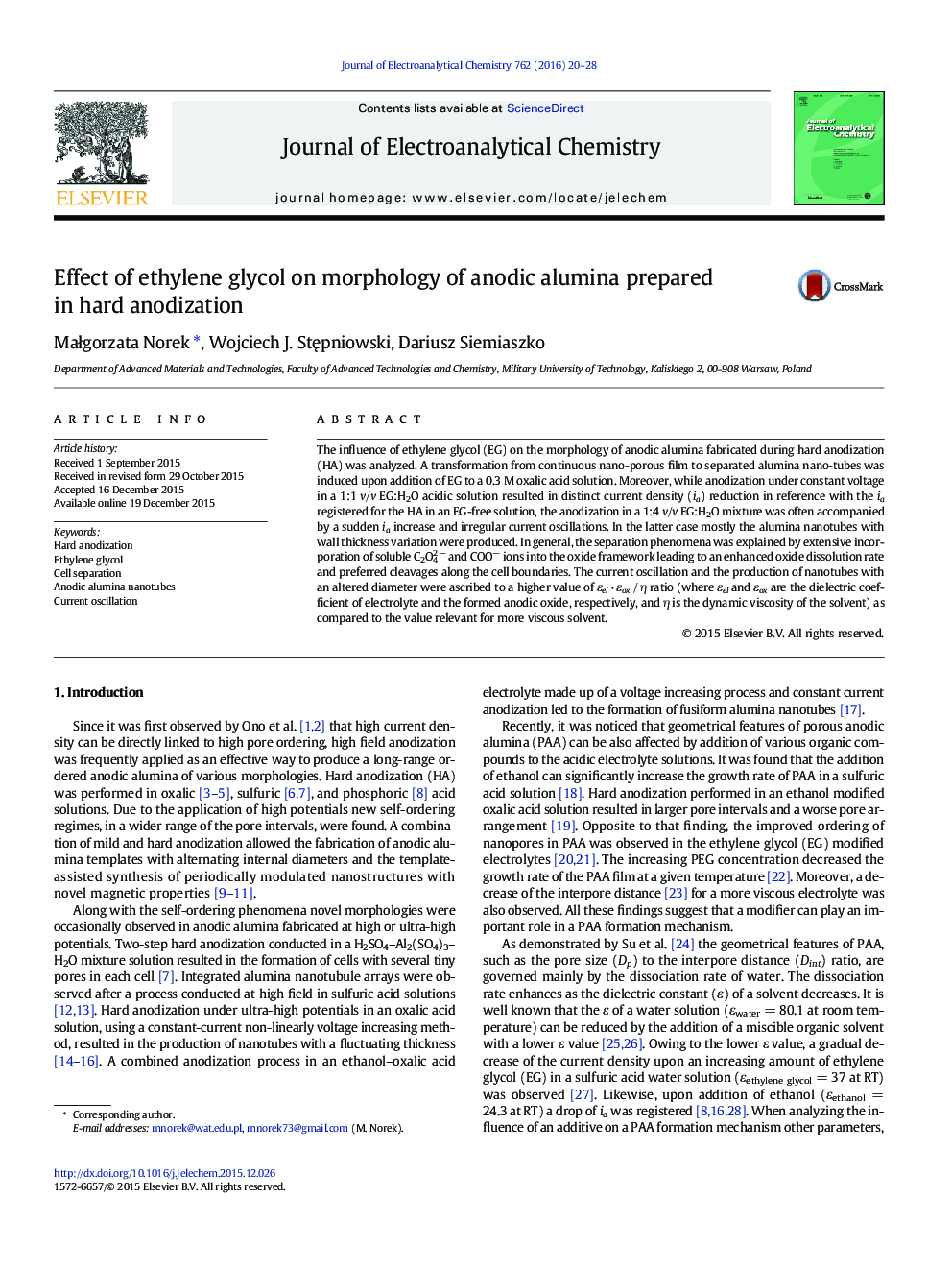| Article ID | Journal | Published Year | Pages | File Type |
|---|---|---|---|---|
| 218090 | Journal of Electroanalytical Chemistry | 2016 | 9 Pages |
•Anodic alumina (AAO) was fabricated during HA in oxalic acid solutions.•H2O-based and EG-modified electrolytes were used.•AAO transformed from a porous film to a nanotubular array upon addition of EG.•For a relatively lower amount of EG irregular current oscillation was observed.•The transformation was explained by incorporation of C containing species in AAO.
The influence of ethylene glycol (EG) on the morphology of anodic alumina fabricated during hard anodization (HA) was analyzed. A transformation from continuous nano-porous film to separated alumina nano-tubes was induced upon addition of EG to a 0.3 M oxalic acid solution. Moreover, while anodization under constant voltage in a 1:1 v/v EG:H2O acidic solution resulted in distinct current density (ia) reduction in reference with the ia registered for the HA in an EG-free solution, the anodization in a 1:4 v/v EG:H2O mixture was often accompanied by a sudden ia increase and irregular current oscillations. In the latter case mostly the alumina nanotubes with wall thickness variation were produced. In general, the separation phenomena was explained by extensive incorporation of soluble C2O42 − and COO− ions into the oxide framework leading to an enhanced oxide dissolution rate and preferred cleavages along the cell boundaries. The current oscillation and the production of nanotubes with an altered diameter were ascribed to a higher value of εel ∙ εox / η ratio (where εel and εox are the dielectric coefficient of electrolyte and the formed anodic oxide, respectively, and η is the dynamic viscosity of the solvent) as compared to the value relevant for more viscous solvent.
Graphical abstractFigure optionsDownload full-size imageDownload as PowerPoint slide
